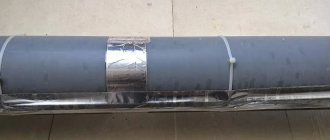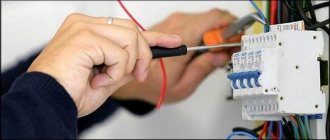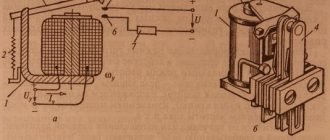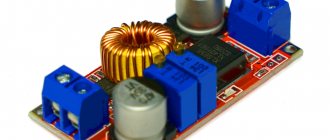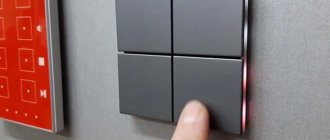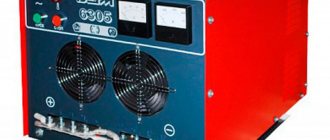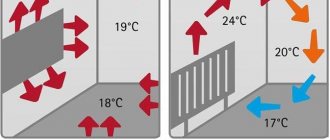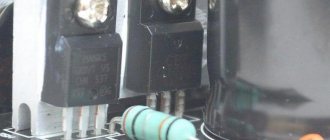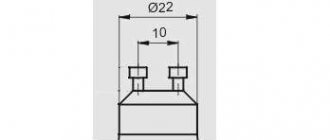How to find out your network type - single-phase or three-phase
A three-phase network differs from a single-phase network in power. At home, you can determine it by several signs:
- the number of wires that come to the switchboard. For a single-phase network - 2 (less often 3, if there is grounding), three-phase - 4, 5. Three of them are phases distributed throughout the house, one is the neutral conductor, one is grounding.
- Power. For a conventional single-phase network, the figure is 220 Volts. In three-phase, the value between zero and phase is 220 Volts, and between two phases is 380. This voltage value is suitable for homes where the use of powerful appliances is likely: DKU, electric stoves, saws, machine tools.
- By the number of circuit breakers. For one phase there is one, for three - three, or one with contacts for three conductors (special device).
You can find out the type of electrical network from the documents that are provided after the installation of electricity in the house by the authorized bodies. Based on this information, it is determined which meter is needed: single-phase or three-phase.
Connection diagram
Any connection of a single-phase electric meter must be agreed upon with the controlling organization, checked and accepted by their employees. The meter must be connected with four wires:
- Terminal 1 - connection of the input phase wire.
- Terminal 2 - connection of the output phase wire, goes to a circuit breaker or plug-type block. From it to the consumption load.
- Terminal 3 - connection of the neutral wire from the electrical network (cannot be connected to the grounding of the box).
- Terminal 4 - connection of the neutral wire to the load (connection to the ground wire of the box is allowed).
Phase input wires are red or brown and are designated by the letter - L. Neutral wires are blue, designated by the letter - N. Grounding wires are green, yellow or yellow-green and the letters PE. The grounding wire must be connected to the body of the box connected to the ground loop. It must be connected to the grounding terminal of each outlet.
Design and principle of operation
A three-phase electricity meter operates in networks where the rated power exceeds 15 kW. The electricity meter consists of:
- current winding;
- voltage windings;
- worm gear (responsible for the movement of the arrow);
- aluminum disk;
- magnet (used for emergency stop of power supply).
The three-phase meter is equipped with an external plastic box. The case is moisture-resistant and dust-proof. Inside the device has two cores. Two voltage windings are attached to them. An aluminum disk is installed in the space between them. It begins its rotation when a magnetic field is formed. This happens when electricity is connected.
The three-phase electricity meter has a worm gear. It represents the connection to the pointer or display monitor. The kilowatts expended are shown on the screen. This is how an analog device works.
Digital electricity meters have an ADC (analog-to-digital converter) unit. It involves transmitting pulses to a microprocessor. The mechanism will calculate the kilowatts consumed.
Each lead from the winding is connected to terminals. Then they are brought to phase. Factory seals must be installed. They will prevent independent intervention in the design of electrical equipment. A three-phase meter without sealing is not valid. It is prohibited to use it for accounting purposes.
Current strength
When determining what type of electric meter to choose based on current, the cross-section of the wiring conductors suitable for it is taken into account. Older models are usually focused on relatively low values. Sometimes this circumstance is the reason for replacement.
The range of permissible current for single-phase options is standard 5–80 A; for products for 3 phases, the upper limit can reach 100 A. For average apartments, a recorder for 5–50 A is sufficient, which corresponds to 6 mm copper conductors and a consumption load of 10 kW .
Housing can be served by water heaters and similar devices with a power of not only 3.5 kW, but also 13–25 and more. Sometimes two boilers are installed, for example, a flow tank for washing and a storage tank for showers and baths. If the total power of household appliances exceeds 10 kW and there are significant periods of their simultaneous operation, then it is necessary to install the device for a higher current value than 50 A.
The described requirements apply to both single-phase (220 V) and three-phase (380 V) wiring, which is more often installed if there are voracious consumers. Calculation of the total current of simultaneously operating consumers and tables of the ratio of this value to kW will help you figure out which device to choose.
Types of three-phase electricity meters
Among three-phase electricity meters, there are several options. They are divided by type of functioning, scope of application, design.
By type of operation
According to the method of work there are:
- single-tariff three-phase meter;
- three-phase two-tariff metering device.
A single-tariff electric meter is suitable for houses, apartments, and industrial production. It does not provide the ability to change the tariff plan at a set time.
A three-phase multi-tariff meter is installed in those houses where the voltage needs to be distributed over several phases. Electricity at night is supplied at a reduced rate. It is connected at enterprises or in private houses with electric heating. You can connect it in a regular apartment. This will be beneficial if you are willing to use powerful electrical appliances (washing machine, dishwasher...) at night.
Read details about the benefits of multi-tariff electricity meters.
A three-phase multi-tariff device is sometimes equipped with a remote control. It allows you to quickly switch operating modes if the device does not automatically do so.
By design
The multi-tariff counting controller can be mechanical or electronic. A mechanical counter is also called an induction counter. It works on the principle of converting electrical energy into mechanical energy. The position of the equipment arrow changes. If all sources of consumption in the house are turned off, the position of the arrow of a three-phase mechanical device will return to zero. Induction electricity meter is used less and less.
The electronic controller is equipped with a digital monitor on which the readings are displayed. May differ from mechanical only in appearance. The workmanship remains the same.
To install the device outside the home, you should choose a street meter. It is practical and adapted to different climatic conditions. This option is also resistant to seasonal changes in air temperature.
By connection type
There are metering equipment of direct and indirect connection. Direct connection meters are designed to control the electricity consumed by low-power consumers. The measurements are carried out by an internal circuit. It is connected to a three-phase alternating current network with four conductors.
When connecting a three-phase electricity meter with indirect connection, it is necessary to have a transformer in the circuit. Suitable for mounting high-power electrical circuits. Several methods can be used for connection:
- star;
- ten conductors;
- connection of voltage and current circuits;
- test terminals.
When using a multi-tariff indirect meter, two circuits are formed: primary and secondary. One is made of thick conductor. It passes through the transformer and plays the role of a core. Current wires are connected to its ends. The secondary winding supplies power to the converter. It is made in the form of coils of conductor with a small cross-section. The result is a finished transformer. It is mounted for each phase. The overall structure is placed in a shield.
Which electricity meter should you choose to stop overpaying?
In every Russian apartment building or private building, in every apartment, wherever there is electricity, a consumption meter must be installed. When deciding which electricity meter to choose, one must proceed from the operating principle of these devices, their price, as well as the presence of a specific model in the list of those approved for installation by the company that supplies the consumer with electricity. Each company has its own lists of installed models of electricity meters.
Advantages and disadvantages
Any 3-phase meter has advantages and disadvantages. Positive qualities include:
- the ability to connect with powerful equipment;
- installation requires input cables of small cross-section;
- the load is evenly distributed between several phases;
- When one of the phases breaks, the home network does not turn off completely.
Three-phase electricity meters are not without their disadvantages:
- Installation of this requires permission from the supplier;
- increased risk of accidents;
- damage to household appliances due to voltage surges;
- large dimensions of the distribution board.
Three-phase electricity meters are used equally for low-power and high-voltage networks.
Induction
The induction electricity metering device is the first invented for this purpose; it is a traditional disk-based (fully electromechanical) device. Inside there are two magnetized coils (for current and voltage), the disk rotates due to the influence of the magnetic fields of these elements. The design is connected to a counting unit with movable digital segments, which show the consumed kW.
Meters with the induction principle are the most reliable and durable: the performance declared by the manufacturer reaches 32 years; in fact, such devices operate for 50 years or more. Disadvantage: measurement accuracy is slightly lower than that of electronic ones. However, this minus is insignificant - induction devices are installed in MCDs, they successfully provide accuracy of “2” and better.
How to choose such a device: basic criteria
When choosing an electrical meter, focus on the following criteria:
- Product quality. You should not buy models of metering devices at a low price. The estimated cost of good equipment is no less than 1800-2500 rubles.
- Hull integrity. The electrical appliance must not be damaged; cracks, nicks, and flimsy connections are not allowed.
- Availability of industrial sealing. There must be seals at each outlet of the electric meter. The device cannot be operated without them.
- Specifications. Based on these parameters, the electric meter is selected, taking into account the characteristics and power of the electrical network, as well as the difference in tariffs.
You can use the equipment only after making sure of its quality.
Price
What about the price of a new meter? Much depends on what device the buyer chooses. Of course, meters designed for a single-phase network are cheaper, and those adapted for a three-phase network are more expensive. You can also notice a strong difference between induction and electronic models - the latter are also more expensive.
What three-phase meter is needed for a private home? There are plenty of options, but if you are not sure that you have enough knowledge, consult with a specialist. The minimum amount that will need to be paid for a three-phase meter is 1,000 rubles. For more expensive models you will have to pay a much larger amount. However, in order not to overpay, it is better to call a specialist to your home. He will be able to name the appropriate amount and suggest parameters for choosing a counter. You should not buy a three-phase meter blindly, as there is a huge risk of losing money.
Popular models in Russia
Three-phase electricity meters of several brands are distinguished by good performance: Incotex, Taipit, Energomer.
Mercury 230 AM-03
A reliable device that can last up to 30 years. Suitable for installation in houses or apartments.
| Power consumption, W/V*A | 1/8 |
| Calibration interval, years | 10 |
| Operating temperature range, °C | -40-+55 |
| Accuracy class | 0.5S-1 |
| Maximum current | 5/7,5-5/60; 10/100 |
| Energy measurement sensitivity | 0,005-0,02/0,025 |
The data in the table is given for direct and transformer-connected metering devices.
Mercury 231 AT-01I
Multi-tariff controller for measuring consumed kW. Can work autonomously. Complies with GOST R 52322.
| Accuracy class | 1 |
| Maximum current, A | 60 |
| Rated current, A | 5 |
| Rated voltage, V | 3*230/400 |
| Calibration interval, years | 10 |
Typeit NEVA 303 1S0 230V 5(60) A 5(60) A
Electromechanical metering device. Used for one tariff. It has good technical characteristics.
| Accuracy class | 1.0 |
| Rated current, A | 5 |
| Maximum current, A | 60 |
| Connection principle | Direct |
| Minimum/maximum frequency, Hz | 47,5/52,5 |
You may also like
Electric meter “Pulsar 1T” LCD RS485 optoport without button
Designed to account for active and reactive energy in 2-wire AC power frequency circuits. The meter can be used autonomously or as part of automated systems for monitoring and accounting of electricity (ASKUE).
Produced in accordance with GOST 31818.11-2012, GOST 31819.21-2012, GOST 31819.23-2012
Number in the state register of measuring instruments of the Russian Federation: 76979-19
Interverification interval - 16 years; Average service life - 32 years; Average time between failures - 318,160 hours; The service life of the meter from one lithium battery is at least 16 years.
from 5482₽
Buy in bulk
Electric meter “Pulsar 1T” LCD LoRa optoport without button
Designed to account for active and reactive energy in 2-wire AC power frequency circuits. The meter can be used autonomously or as part of automated systems for monitoring and accounting of electricity (ASKUE).
Produced in accordance with GOST 31818.11-2012, GOST 31819.21-2012, GOST 31819.23-2012
Number in the state register of measuring instruments of the Russian Federation: 76979-19
Interverification interval - 16 years; Average service life - 32 years; Average time between failures - 318,160 hours; The service life of the meter from one lithium battery is at least 16 years.
from 2947₽
Buy in bulk
Electric meter “Pulsar 1T” LCD “Pulsar IoT” optoport without button
Designed to account for active and reactive energy in 2-wire AC power frequency circuits. The meter can be used autonomously or as part of automated systems for monitoring and accounting of electricity (ASKUE). Produced in accordance with GOST 31818.11-2012, GOST 31819.21-2012, GOST 31819.23-2012 Number in the state register of measuring instruments of the Russian Federation: 76979-19 Calibration interval - 16 years; Average service life - 32 years; Average time between failures - 318,160 hours; The service life of the meter from one lithium battery is at least 16 years.
from 2673₽
Buy in bulk
Electric meter sealing
You cannot allow voltage into the house until a seal is placed on your meter, which confirms that no manipulations are made with the device after it has been introduced into the load. Therefore, after connection, contact your electricity supplier with a statement that you are going to start using a new meter. Please include the following points in your application:
- Information about the energy consumer (real estate owner);
- Date of installation of the metering device;
- Request to put the device into operation.
Meter sealing is paid. If the electricity supplier pays for it, then he has the right to install the seal himself or involve employees of his company in this work. If you pay for the installation of the seal, then you can also decide who will install it.
After sealing, you have the right to put a load on the chain. And this is where your work on connecting and commissioning the electricity meter ends. All that remains is to check its operation every time the next inter-verification period of time comes to an end.
INCOTEX Mercury 231 AT-01 I (2 tariffs) 5(60) A
Multi-tariff three-phase multi-tariff energy meter INCOTEX Mercury 231 AT-01 is used mainly in residential premises to keep track of electricity consumption in 4-wire 3-phase electric current networks under voltage up to 380 V.
Connects directly to electrical networks and has a verification period of 10 years. The device displays information on a liquid crystal screen. Transmits data on electricity consumption per day, month, in total and for each of the previous 11 months, as well as for the current and previous year, via the IrDA interface.
Advantages:
- high accuracy class;
- ease;
- versatility: works both in the AIMS system and autonomously;
- availability of an event log with the exact date of opening of the device;
- automatic self-diagnosis;
- DIN rail mounting.
Flaws:
- high price;
- fragility of the screw terminals of the terminal block when re-tightening.
Installation Rules
Connecting an electricity meter with your own hands does not exempt you from following the rules:
- The room where the meter is installed must have normal or low air humidity. Allowable temperature range: 0-40 degrees. Therefore, the room must be heated;
- The housing can be mounted in a distribution panel, in a cabinet, on a wall or on panels made of wood, plastic and metal. The niches should be spacious so as not to impede access to the device;
- Installation at a height of 0.8-1.7 meters is allowed. It is better at eye level so that it is convenient to take readings;
- The tilt of the body should not exceed 1 degree, otherwise the accuracy of the readings will sharply decrease. This applies to a greater extent to induction devices;
- When connecting, you need to strip the wires by 1.2 cm, no less;
- Additionally, installation of a circuit breaker is required. By de-energizing the circuit with its help, you can repair or reinstall the meter.
The sealing stage is required. If there are no seals on the metering device, or it is damaged, then you will be accused of stealing electrical energy, even if this is not the case.
Other factors when choosing a meter
A few more factors that you should pay attention to when choosing equipment for metering electricity consumption:
- Automatic consumption metering. The option is attractive for those users who do not have the time to take readings on their own.
- Country of manufacture. At the moment, Russian devices are considered to be not inferior in quality to foreign ones. The products of these and Energomera are popular among consumers.
- Repair prices for a specific model. Most often, repair work costs less than purchasing and installing a new device. However, repair prices can vary quite a bit depending on the model.
- Noisy operation. Some models make a buzzing sound when operating. This creates discomfort, so it would be a good idea to ask the seller about the noise level of the device.
Some buyers prefer induction meters since this equipment allows “rewinding” of flow. However, now the time has come for new induction models that have a magnetization indication function. The inspector will notice if the indicator goes off, which will lead to charges of electrical theft.
